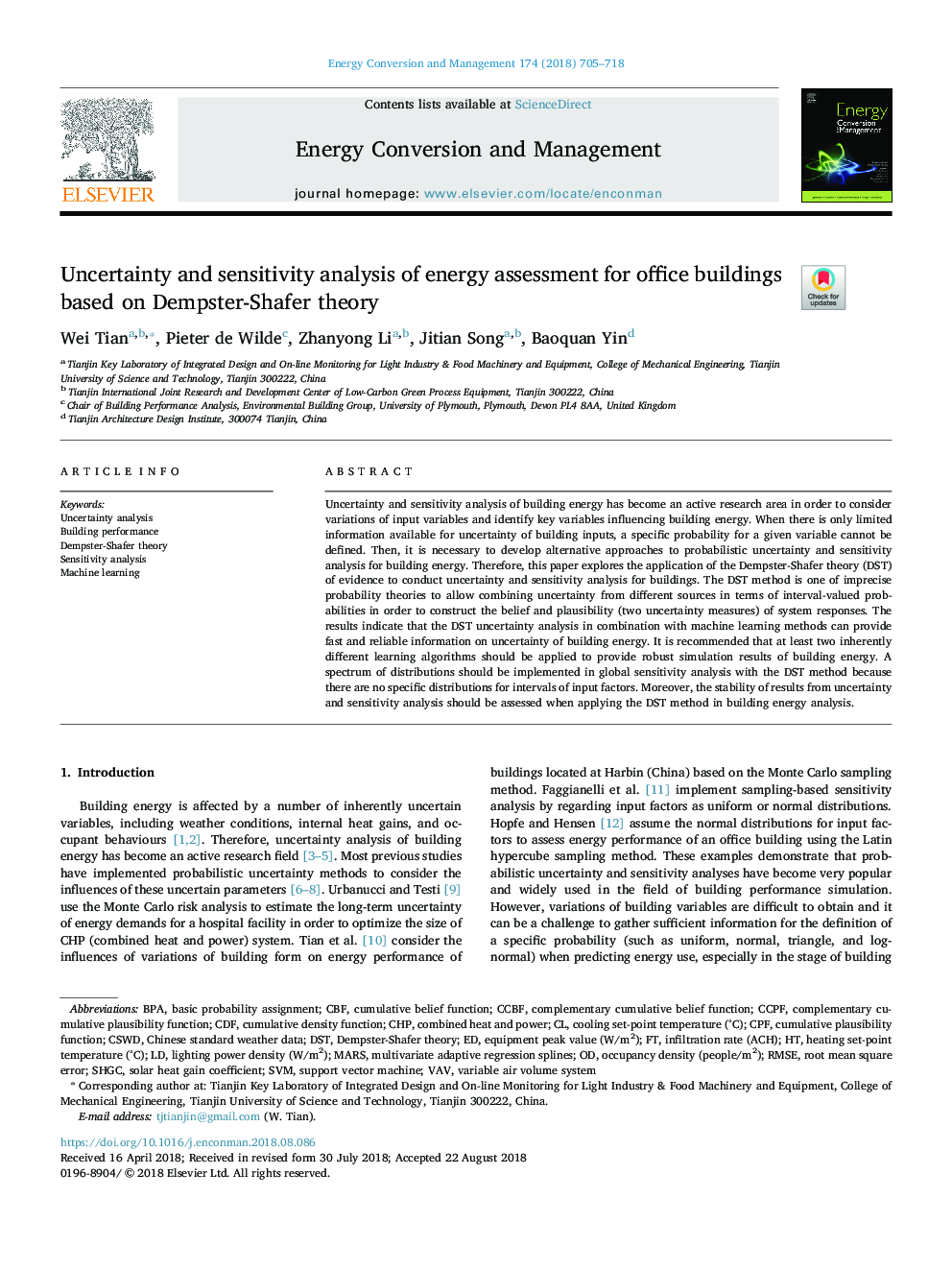| کد مقاله | کد نشریه | سال انتشار | مقاله انگلیسی | نسخه تمام متن |
|---|---|---|---|---|
| 11003802 | 1462788 | 2018 | 14 صفحه PDF | دانلود رایگان |
عنوان انگلیسی مقاله ISI
Uncertainty and sensitivity analysis of energy assessment for office buildings based on Dempster-Shafer theory
ترجمه فارسی عنوان
عدم قطعیت و تحلیل حساسیت ارزیابی انرژی برای ساختمان های اداری بر اساس نظریه دمپستر-شافر
دانلود مقاله + سفارش ترجمه
دانلود مقاله ISI انگلیسی
رایگان برای ایرانیان
کلمات کلیدی
BPADSTCBFCPFRMSEVAVCDFCHPSHGCBasic probability assignment - انتساب احتمال احتمالیDempster-Shafer theory - تئوری دمپستر-شافرcumulative density function - تابع چگالی تجمعیUncertainty analysis - تجزیه و تحلیل عدم قطعیتSensitivity analysis - تحلیل حساسیتCombined Heat and Power - ترکیب گرما و قدرتMultivariate adaptive regression splines - تنوع رگرسیون چند متغیره انطباقیRoot mean square error - ریشه میانگین خطای مربعMars - سیاره مریخVariable air volume system - سیستم حجم متغیر هواSolar heat gain coefficient - ضریب به دست آوردن گرما خورشیدیBuilding performance - عملکرد ساختمانSVM - ماشین بردار پشتیبانیSupport vector machine - ماشین بردار پشتیبانیMachine learning - یادگیری ماشین
موضوعات مرتبط
مهندسی و علوم پایه
مهندسی انرژی
انرژی (عمومی)
چکیده انگلیسی
Uncertainty and sensitivity analysis of building energy has become an active research area in order to consider variations of input variables and identify key variables influencing building energy. When there is only limited information available for uncertainty of building inputs, a specific probability for a given variable cannot be defined. Then, it is necessary to develop alternative approaches to probabilistic uncertainty and sensitivity analysis for building energy. Therefore, this paper explores the application of the Dempster-Shafer theory (DST) of evidence to conduct uncertainty and sensitivity analysis for buildings. The DST method is one of imprecise probability theories to allow combining uncertainty from different sources in terms of interval-valued probabilities in order to construct the belief and plausibility (two uncertainty measures) of system responses. The results indicate that the DST uncertainty analysis in combination with machine learning methods can provide fast and reliable information on uncertainty of building energy. It is recommended that at least two inherently different learning algorithms should be applied to provide robust simulation results of building energy. A spectrum of distributions should be implemented in global sensitivity analysis with the DST method because there are no specific distributions for intervals of input factors. Moreover, the stability of results from uncertainty and sensitivity analysis should be assessed when applying the DST method in building energy analysis.
ناشر
Database: Elsevier - ScienceDirect (ساینس دایرکت)
Journal: Energy Conversion and Management - Volume 174, 15 October 2018, Pages 705-718
Journal: Energy Conversion and Management - Volume 174, 15 October 2018, Pages 705-718
نویسندگان
Wei Tian, Pieter de Wilde, Zhanyong Li, Jitian Song, Baoquan Yin,
